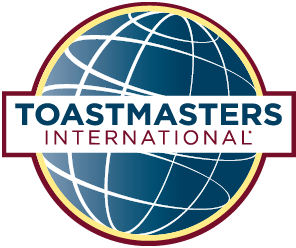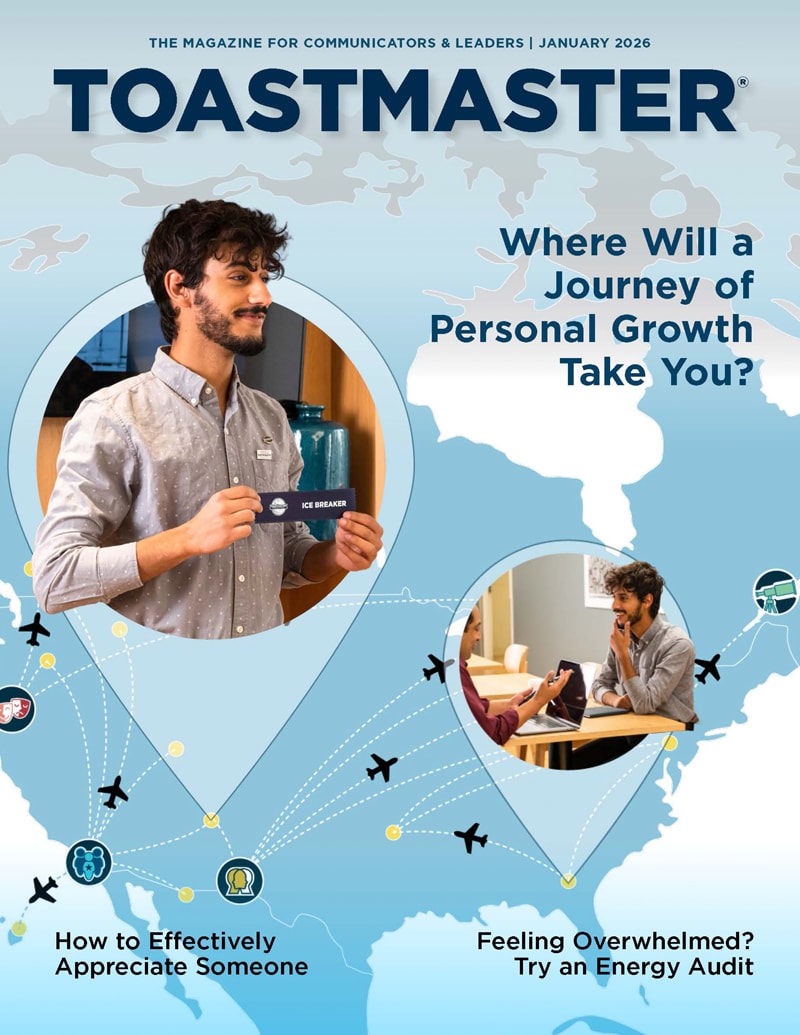
For the first time, Toastmasters clubs can aim for Smedley Distinguished, the fourth and highest level of recognition, allowing clubs the same recognition levels as Districts. The Board of Directors added the Smedley level to the Distinguished Club Program (DCP) starting with the 2025–2026 program year, which began July 1.
The Board also made other changes to the DCP and the Distinguished Recognition Program (DRP)—for Districts—to improve the programs. Board members said their objective for updating the DCP was to challenge clubs to reach for higher goals, to make recognition more accessible for clubs at all stages, and to encourage more clubs to participate in the program.
The addition of the Smedley level, which already exists in the DRP, provides a new and exciting challenge for clubs around the world who are already high performing, say Toastmasters leaders. That can lead to higher achievement, and in turn, more benefits to members.
“When clubs set higher targets, members get chances to take on roles, develop skills, and be part of something a bit more ambitious,” says Toastmasters International President-Elect Aletta Rochat, DTM, who chaired a Board committee that studied how to strengthen the two recognition programs. “It helps build a sense of pride and keeps people motivated.”
That kind of spirit and effort translates into “quicker growth, stronger connections, and a more supportive environment where everyone pushes each other a little more,” notes Rochat, of Cape Town, South Africa.
Clubs achieve Distinguished or higher status if they meet up to 10 goals (a combination of education, membership, training, and administration) in the DCP. The more goals achieved, the higher level of Distinguished. The four levels are Distinguished, Select Distinguished, President's Distinguished, and Smedley Distinguished.
Clubs who had peaked at the President's Distinguished level can now shoot for something higher. To reach Smedley Distinguished, clubs need to maintain at least 25 members and accomplish all 10 DCP goals.
“This higher bar encourages clubs to not just meet expectations, but to exceed them—resulting in stronger meetings and deeper engagement,” says International Director Violetta Rios, DTM, of Monterrey, Nuevo León, Mexico, also a member of the Recognition Committee.
The Role of Recognition
Recognition has always been a touchstone of the Toastmasters experience. Strong recognition programs celebrate member achievement, motivating Toastmasters by reinforcing their progress. “Especially in a volunteer-led organization, celebrating even small wins keeps energy high and members engaged,” says Rios. “I've seen people grow simply because someone said, 'I see you—you're doing great.'”
Other changes to the DCP include the qualifying requirements:
- Clubs must now complete and submit a Club Success Plan to World Headquarters by September 30 to qualify to participate in the DCP.
- The membership qualifying requirement has also changed. Previously, there was only one membership requirement
for all levels of Distinguished. Now it is different depending on the level:
- To achieve Distinguished status, clubs must have 20 paid members or a net growth of three new, dual, or reinstating members.
- To achieve Select Distinguished, clubs must have 20 paid members or a net growth of five new, dual, or reinstating members by the end of the program year.
- For President's Distinguished, clubs must have 20 paid members by the program year's end.
The changes are meant to benefit clubs wherever they are in their developmental journey. Past International Director Benjamin McCormick, DTM, of Springfield, Queensland, Australia, another member of the Recognition Committee, points out that the lower net growth requirement to be Distinguished “should make the entry level of Distinguished easier to achieve.” At the same time, the Board increased the qualification numbers for the highest levels of Distinguished, to spur clubs to stretch themselves.
The result is that “the new levels of Distinguished allow clubs of different sizes to strive and achieve,” says McCormick, a Board member from 2022 to 2024.
Updates to District Recognition
Some qualifying requirements have also changed in the Distinguished District Program (part of the broader District Recognition Program).
- To be Distinguished, at least 45% of the District's base must consist of Distinguished clubs—an increase from 40%.
- The percentage of Distinguished clubs required also rose 5% for the other three levels (45–50% for Select, 50–55% for President's Distinguished, and 60% for the Smedley level).
- A District must also show at least 1% net club growth to earn Distinguished status, whereas it used to be no net club loss.
These are other requirements now needed to be a Distinguished District:
- Districts must submit a Division and Area Directors Training Report for 85% of Division and Area Directors, as well as District Success, Market Analysis, and Communication plans, by September 30.
- Each District must have at least two meetings with their Region Advisor by May 31.
In addition, in the Division Recognition Program, a Division must now have a net club growth of one to be Select Distinguished and a net club growth of two to be President's Distinguished.
Committee chair Rochat says the changes to the DCP and DRP are about “helping every club create a vibrant, engaging space where members can grow and thrive.”
“No matter where clubs and Districts are on their journey, these updates make the program easier to access,” she adds. “Whether your club is rebuilding or already thriving, there's a clear path to recognition.”
Paul Sterman is senior editor, executive and editorial content, for Toastmasters International. Reach him at psterman@toastmasters.org.



 Previous
Previous

 Previous Article
Previous Article

